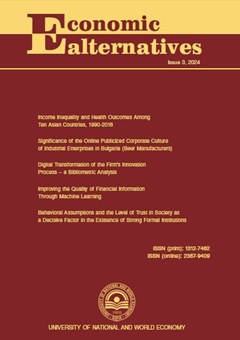Fintechs, Banks, and Financial Re-Intermediation
Author: Lyubomir Georgiev
Abstract
This paper analyses the advances in fintech over the last decade, which have triggered fundamental changes in both banking and the structure of financial intermediation. Competitive pressures on banks in the provision of financial services raise two important questions: can fintech fully replace banks as financial intermediaries; what are the conceptual foundations explaining the development and growth of the fintech sector? In this sense, the study aims at comparing platform fintech re-intermediation versus traditional banking intermediation. Furthermore, fintech companies are placed in the broader context of financial intermediation models and financial system architecture. The analysis carried out shows that: (i) fintech platforms perform re-intermediation but do not eliminate but complement banks in certain market niches; (ii) new high-tech approaches to minimising market frictions (complementing non-financial data with financial data, as well as realising economies of scale in information accumulation and processing) explain, from a theoretical point of view, the growth of the fintech sector; (iii) increased trust as a result of blockchain technology and smart contracts allows to remove the need for intermediaries in some segments of financial markets.

